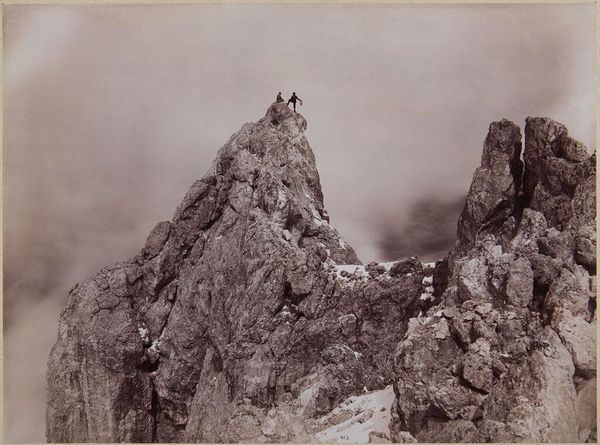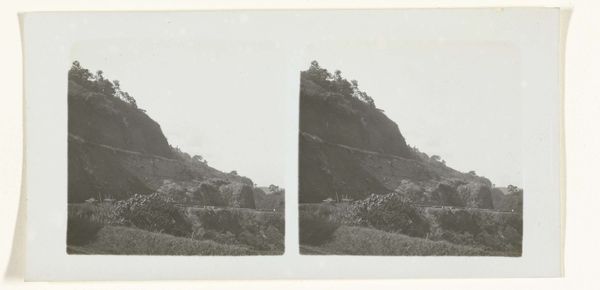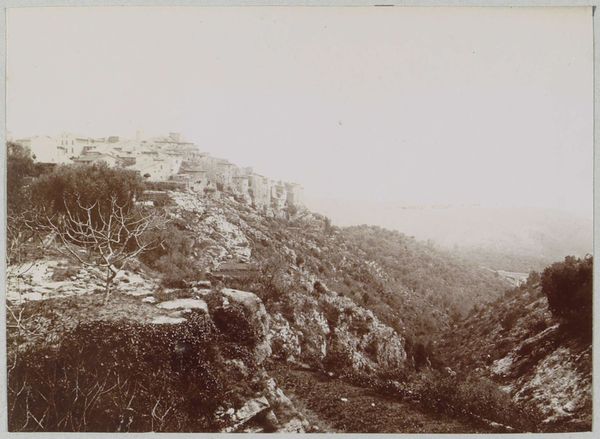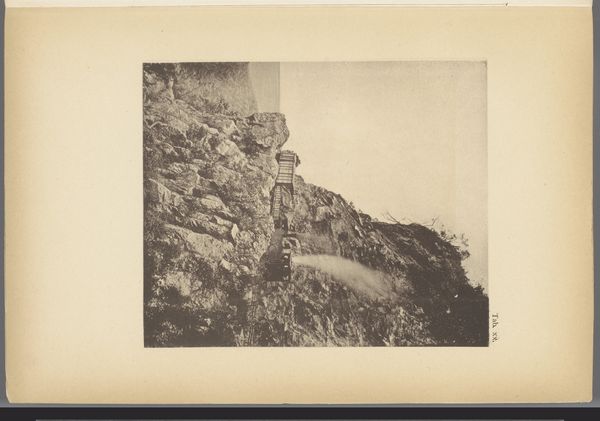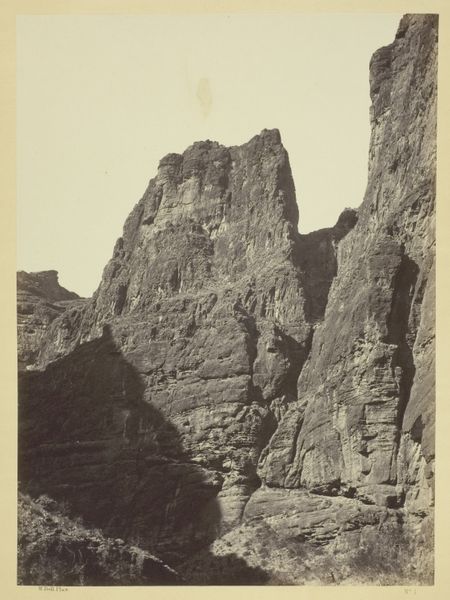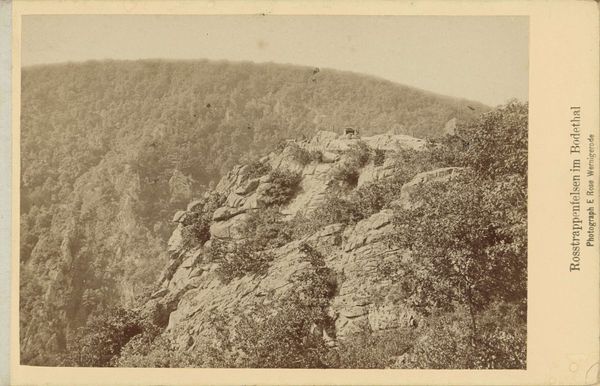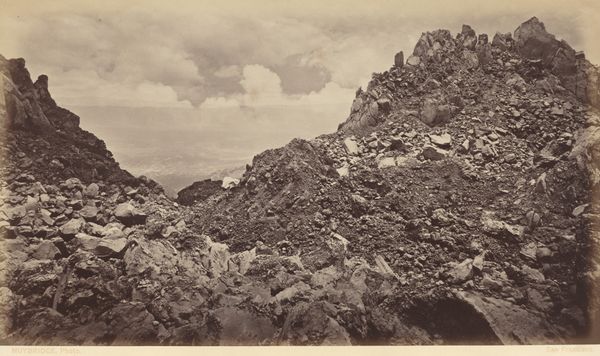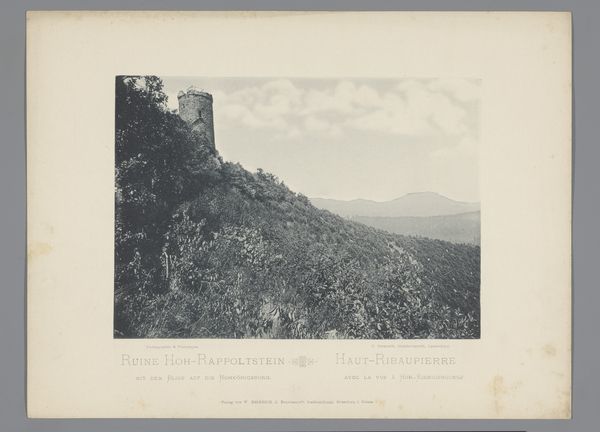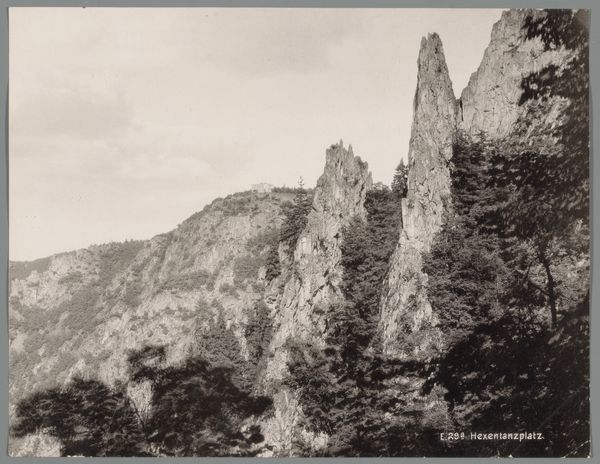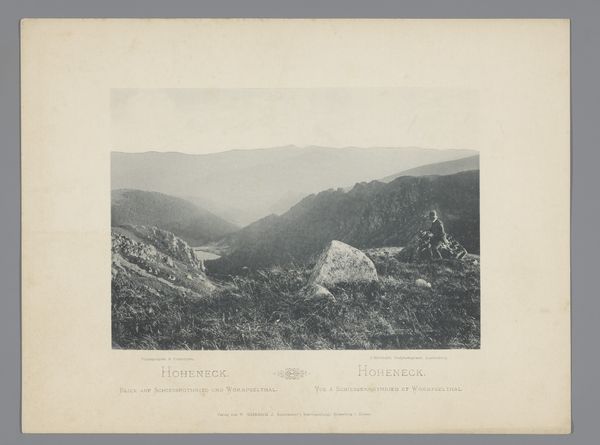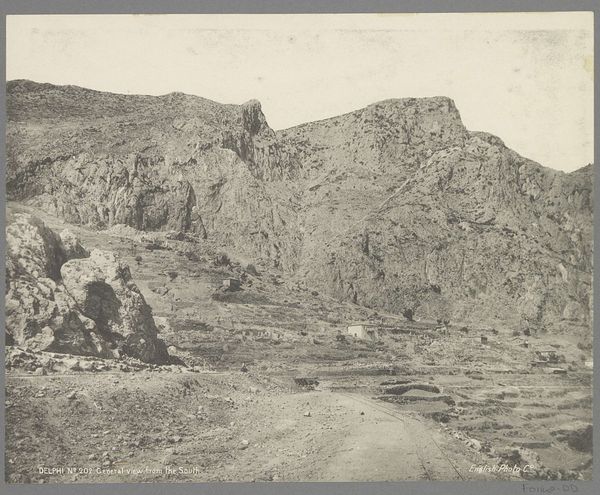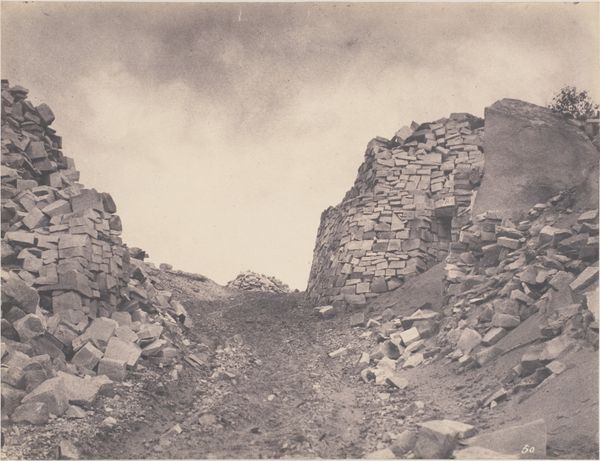
Kinderen poserend op een rots in het Corsicaanse landschap c. 1886 - 1896
0:00
0:00
Dimensions: height 170 mm, width 230 mm, height 322 mm, width 498 mm
Copyright: Rijks Museum: Open Domain
Editor: Here we have "Children Posing on a Rock in the Corsican Landscape," a photograph from around 1886 to 1896 by Henry Pauw van Wieldrecht, housed at the Rijksmuseum. It strikes me as a very staged, almost theatrical scene, not really capturing a candid moment. What catches your eye when you look at this image? Curator: Well, considering this within the broader context of late 19th-century photography, particularly portraiture, this piece exemplifies the public role that photography assumed. This wasn’t merely about capturing a likeness; it was about crafting an image intended for circulation and, to some extent, constructing a narrative. These photographs often participated in a colonial gaze, exoticizing the 'other.' What do you notice about the children's clothing and demeanor? Editor: They seem almost consciously dressed for the photo, particularly the girl with the headscarf. And they look rather stiff. Were such portraits common as postcards perhaps, spreading a certain image of Corsica? Curator: Exactly! The institutional context matters: the Rijksmuseum owning this piece speaks to its recognized artistic and historical value now, but originally it likely functioned quite differently, contributing to the popular imagination of Corsica and its people. Do you think the positioning of the children in the landscape is coincidental, or deliberate? Editor: Deliberate. They’re literally ‘placed’ on a rock, turning them into a part of the landscape itself, further objectifying them. It makes you wonder about the power dynamics at play during the creation and consumption of these images. Curator: Precisely. Reflecting on the public role and reception of photographs, especially those portraying individuals from different cultures, reveals how intertwined art is with the prevailing social and political attitudes of its time. It helps to consider how images such as this circulated and what effects they might have had. Editor: Definitely. It shifts your perspective to consider not just what the photo depicts but its original intended audience and wider societal impact. Thanks for helping me see beyond the surface.
Comments
No comments
Be the first to comment and join the conversation on the ultimate creative platform.
